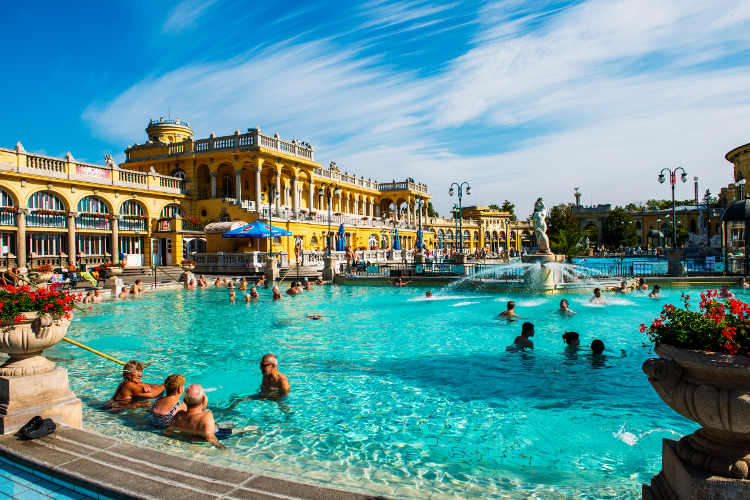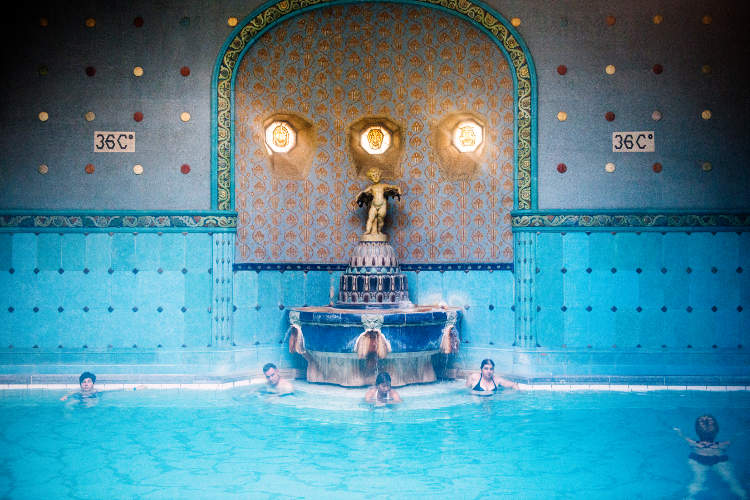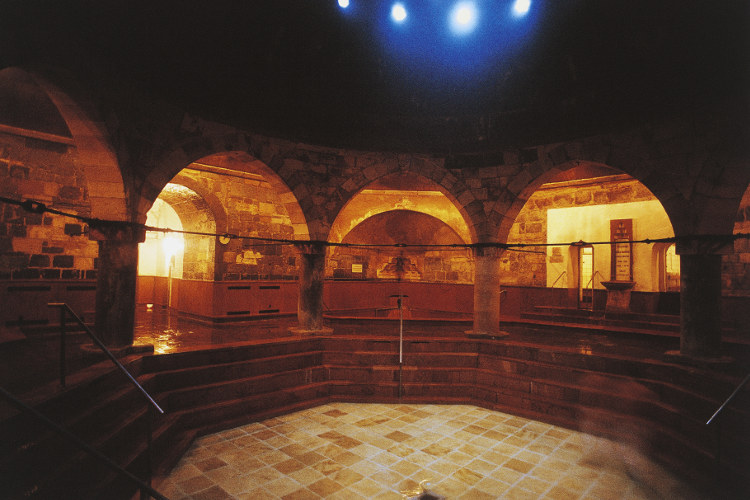Which bath you choose is a matter of taste and what exactly you’re looking for – be it fun, a hangover cure or relief for something more serious. Here are the essential tips to keep in mind when planning a visit to Budapest’s baths, and our selection of the best of them.

Opening times and who is welcome when depend on the day of the week and the time. Many baths now open at night during the weekend. Fewer and fewer baths have male- and female-only days, so pack a bathing suit or be prepared to rent one.
Admission charges start at 2400Ft, which in theory allows you to stay for two hours on weekdays and one hour and a half at weekends (a rule seldom enforced nowadays).
Some of the baths (eg the Király) look a little rough around the edges, but they are clean and the water is changed constantly. However, you might consider taking along a pair of plastic sandals or flip-flops (also, the floors can get very slippery).

The layout of most of Budapest’s baths is similar: a series of indoor thermal pools, where temperatures range from warm to hot, with steam rooms, saunas, ice-cold plunge pool and rooms for massage. Some have outdoor pools with fountains, sprays and whirlpools. Being thermal, some are open year-round.
Depending on the time and the day of the week, baths can be for men or women only. However, there are usually mixed days and some baths – the Széchenyi Baths in City Park, for example – are always open for men and women together. On single-sex days or in same-sex sections, men are usually handed drawstring loincloths and women apron-like garments to wear, though the use of bathing suits is on the increase even on single-sex days. You must wear a bathing suit on mixed-sex days; these are available for hire (1200Ft) if you don’t have your own. Some pools require even men to use a bathing cap; bring your own or wear the disposable plastic one provided or sold for about 200Ft. Most pools also rent towels (1000Ft), though you are provided with a less-than-absorbent ‘sheet’ as you enter the rest area.
Most of the baths offer a full range of serious medical treatments plus more indulgent services such as massage (3800/5000Ft per 20/30 minutes), pedicure (3500Ft) and the intriguing red-wine bath (8900Ft). Specify what you want when buying your ticket.

The procedure for getting out of your clothes and into the water requires some explanation. All baths and pools have cabins and/or lockers. In most of the baths nowadays you are given an electronic bracelet which directs you to and then opens the locker or cabin door. Some places – the Gellért Baths, for example – still use the old, more personal method. Find a free locker or cabin yourself (it’s visual flight rules here). After getting changed in (or beside) it, seek out an attendant (usually wearing a white coat or smock and holding a large bunch of keys), who will lock it for you and hand you a numbered tag to tie on your costume or ‘apron’. Commit your locker number to memory; in order to prevent theft should you lose or misplace the tag, the number on it is not the same as the one for the locker.

Which bath you decide to visit is really a matter of choice, but you should certainly consider the following.
Rudas Baths The renovated Rudas Baths, with an octagonal pool, are mostly men-only during the week but have mixed nights on weekends. Vibe: Most famous of the Turkish baths
Gellért Baths The Art Nouveau Gellért Baths, now open to both men and women at all times, have the most beautiful indoor swimming pools in the city. Vibe: Get wet in a cathedral
Széchenyi Baths The gigantic and lavish Széchenyi Baths boast 15 thermal baths and three swimming pools; the water temperature is up to 38°C. Vibe: Hot water in a wedding-cake building
Veli Bej Baths This venerable Turkish bath, renovated in 2011, has five thermal pools and original clay pipes for pumping in the water. Vibe: Something old and something new
Király Baths The four pools at Ottoman-era Király Baths are very authentic though in need of renovation; they are open to both men and women on all days. Vibe: Ancient and very Turkish
Lukács Baths The waters of the Lukács Baths are meant to cure just about everything — from spinal deformation and vertebral dislocation to calcium deficiency. Vibe: For serious spa fans only
Danubius Health Spa Margitsziget The facilities at the Danubius Health Spa Margitsziget on Margaret Island are rather soulless but modern, and the choice of special treatments is epic. Vibe: Pampering and preening